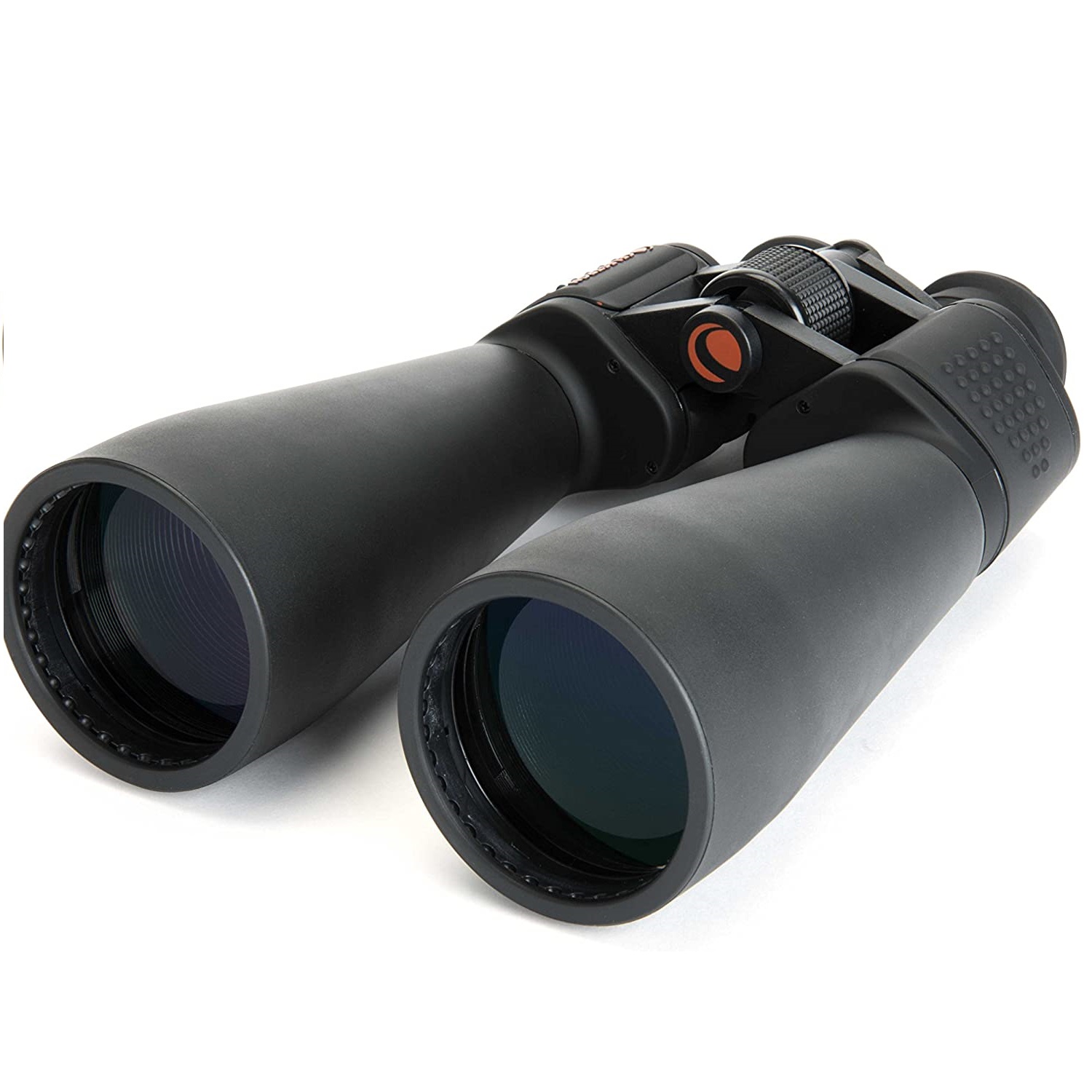
- Brand Celestron
- Eye Relief 13 Millimeters
- Material Synthetic

- Brand Bushnell
- Eye Relief 9 Millimeters
- Material Plastic

- Brand Bushnell
- Color Black
- Eye Relief 9 Millimeters
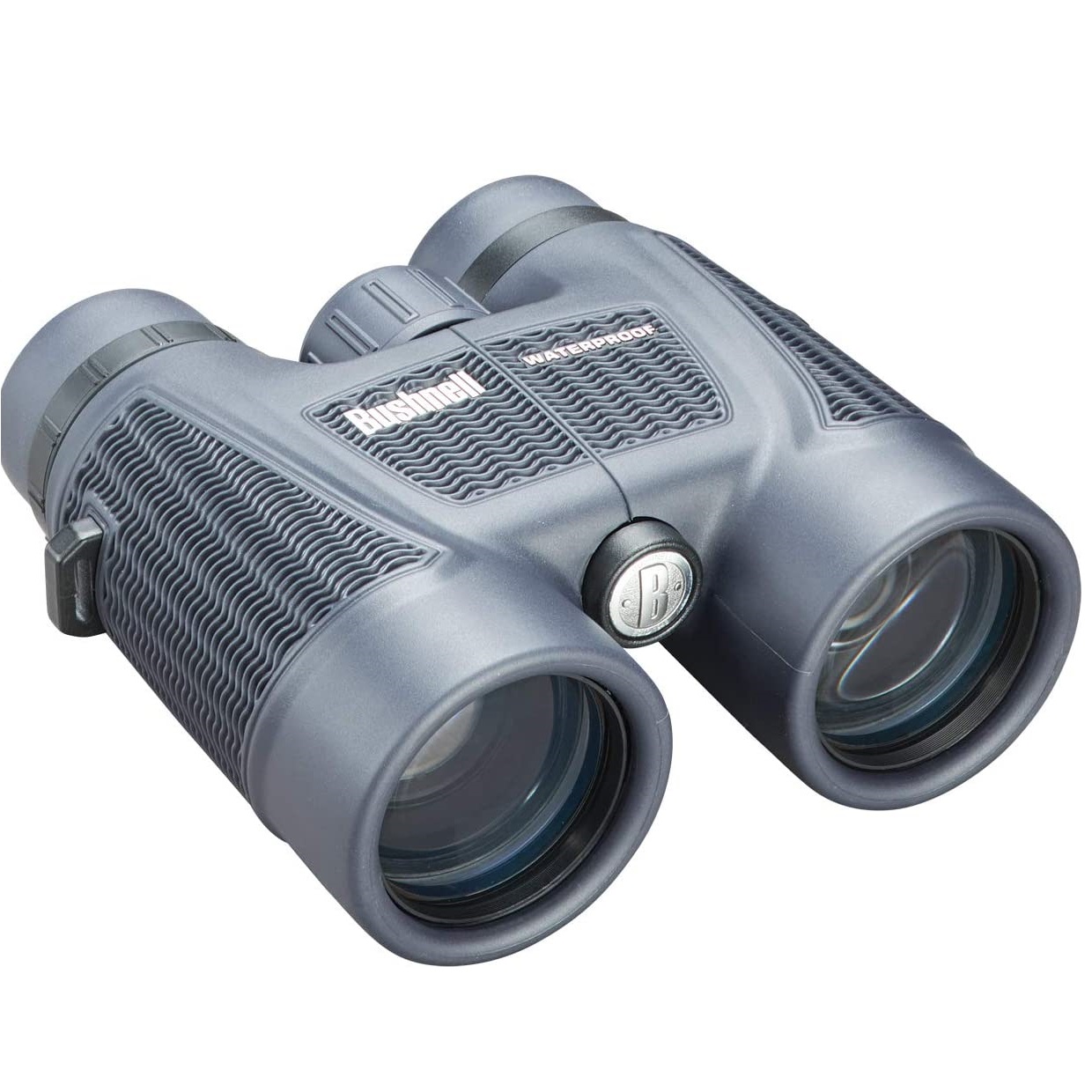
- Brand Bushnell
- Color Black
- Eye Relief 17 Millimeters
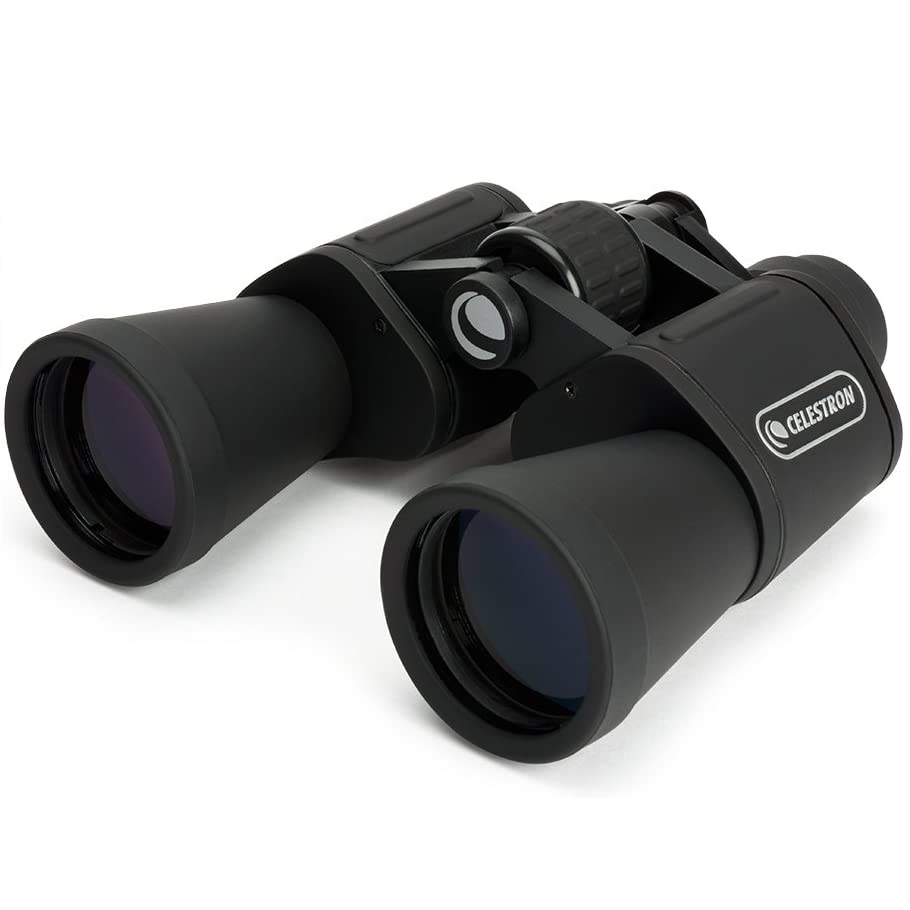
- Brand Celestron
- Color Black
- Eye Relief 11 Millimeters
Choose the Best Binocular for Hunting
Customer’s Choice: the Best Rated Binoculars for Hunting
3 users answered this survey. Please help us improve this review!
When you’re hunting in the field, you need to have the finest hunting binoculars available to assist you with your task. Not all binoculars are created equal – in fact, some are much better suited for hunting than others. In this comprehensive guide, we will discuss the five best hunting binoculars and outline why each one is a great choice.
What are Binoculars for Hunting?
Hunting Binoculars are a type of sport optics that allow the user to see distant objects with greater clarity than the naked eye. Binoculars typically consist of two matched telescopes, which are mounted on a frame that allows the user to hold them steady while in use.
Most binoculars for hunting have the front lens of 30mm or more, which helps to gather more light and make a brighter image. Many models also have zoom lenses that allow the user to focus on specific details at different distances.
Binoculars can be used for many different types of hunting, including waterfowl, and varmint hunting. They can also be useful for tracking game animals and for scouting potential hunting areas.
Table of Contents
Celestron – SkyMaster 25X70 Binocular – Outdoor and Astronomy Binoculars
 This binocular is a powerful tool for hunting, offering 25x magnification and 70 mm objective lenses. The large aperture allows for long distance viewing, while the multi-coated lens ensure a clear image.
This binocular is a powerful tool for hunting, offering 25x magnification and 70 mm objective lenses. The large aperture allows for long distance viewing, while the multi-coated lens ensure a clear image.
Specifications
- Material Synthetic
- Eye Relief 13 mm
- Binocular Prism Porro Prism
- Linear Field of View (at 1000 yds.) at 1000 m): 141 feet (47 m)
- Exit Pupil: 0.11 inches
- Eye Relief: 0.51 inches
Bushnell Falcon 133410 Binoculars with Case (Black, 7×35 mm)
 The Bushnell Falcon 133411 is a great choice for those who are looking for a high-quality, durable pair of binoculars. With a magnification of up to x 35, these binoculars offer excellent image quality and light gathering ability.
The Bushnell Falcon 133411 is a great choice for those who are looking for a high-quality, durable pair of binoculars. With a magnification of up to x 35, these binoculars offer excellent image quality and light gathering ability.
The large field of view (FOV) makes them ideal for hunting, as you’ll be able to spot your game easily. And the included case ensures that your binoculars will be protected when not in use.
Specifications
- Color Black
- Material Plastic
- Eye Relief 9 mm
- Close focusing distance 20 Feet
- Eye relief 12 mm
- Exit pupil 5 mm
- Field of view at 1000 yards 420 feet
- Lens diameter 35 mm
- Weight 21 Ounce
Bushnell Falcon 10×50 Wide Angle Binoculars
 This is a great choice for hunters who want a versatile pair of binoculars that can do double duty as birding or nature watching binoculars. These particular models offer fantastic value, with very good optics for the price.
This is a great choice for hunters who want a versatile pair of binoculars that can do double duty as birding or nature watching binoculars. These particular models offer fantastic value, with very good optics for the price.
Specifications
- Color Black
- Material Rubberized
- Eye Relief 9 mm
- Exit Pupil 5 mm
- Eye Relief 9 mm
- Close focusing distance 25 feet
- Weight 27 Ounce
- Porro prism
Bushnell H2O Roof Prism Binoculars
 They are designed with waterproof and fog-proof construction. It also has a rubber armor coating for a non-slip grip, even when your hands are wet.
They are designed with waterproof and fog-proof construction. It also has a rubber armor coating for a non-slip grip, even when your hands are wet.
Specifications
- Color Black
- Material Rubber
Eye Relief 17 mm - Exit Pupil 4.2 mm / 0.165 inch
- Objective diameter 42 mm
- Close focus distance 12 feet
Celestron – UpClose G2 20×50 Porro Binoculars with Multi-Coated BK-7 Prism Glass
 These binoculars offer a great deal of clarity and light-gathering ability in a relatively compact form factor. They’re also affordably priced, making them a great option for budget-minded hunters.
These binoculars offer a great deal of clarity and light-gathering ability in a relatively compact form factor. They’re also affordably priced, making them a great option for budget-minded hunters.
These binoculars have multi-coated BK-prism glass lenses that produce bright, clear images. The 50mm objective lenses gather plenty of light, making them perfect for dawn and dusk.
Specifications
- Color Black
- Material Metal
- Water Resistance Level Water Resistant
- Eye Relief 11 mm
Buyer’s Guide
Choosing binoculars for hunting
The most significant consideration when selecting binoculars for hunting is the binocular’s optical quality. Good optics will help you spot game at long distances, in low light conditions and in thick brush. Here are a few other factors to keep in mind:
- Magnification: Most hunters prefer binoculars with a magnification of at least eight power. Higher magnifications can be useful for spotting game at long distances, but they can also make it difficult to hold the binoculars steady.
- Objective Lens Diameter: The objective lens is the larger of the two lenses on a pair of binoculars. A larger objective lens will gather more light, making it easier to see.
- Weight and Size: Binoculars for hunting can range in size from small, compact models that fit in your pocket to large, heavy-duty models that require a tripod. Choose a pair of binoculars that is comfortable for you to carry and use.
- Price: Binoculars for hunting can range in price from less than $100 to more than $1000.[1]
How Binoculars Work
Binoculars work by magnifying an image and then projecting it to your eyes. This is done through the use of two lenses, one in front of each eye. The distance between these two lenses is what determines how much magnification power the binoculars have.

The first thing you need to do when using binoculars is to hold them steady. If you are hand-holding the binoculars, you will need to brace your elbows on something solid like a tree or fence post.
Also, be sure that the tripod head is tight so that there is no movement when you pan from side to side.Porro and Roof Prisms
There are two main types of binoculars: Porro and Roof. Porro prism binoculars are the most common type and have a distinct, triangular shape. They are also usually less expensive than Roof prism binoculars.
Roof prisms are smaller and lighter than Porro prisms, owing to the fact that they have a straight barrel. They are a good choice for people who will be carrying their binoculars around for long periods of time.
Magnification power is the next thing you need to take into account. The magnification power is represented by two numbers, such as “12×50”. The first number is the amount of times that the image is magnified and the second number is the diameter of the objective lens in mm.
For example, if you are looking at an object that is 500 yards away and you are using binoculars with a 12x magnification power, it will appear as if the object is only 40 yards away.
The size of the objective lens is important because it determines how much light can enter the binoculars. This is especially important when hunting in low-light conditions like dawn or dusk. A larger objective lens allows more light to enter and will provide a brighter image.
Roof Prisms vs Porro Prism
So which type is best for hunting? Honestly, it depends on your personal preferences and needs. If you’re looking for a compact pair of binoculars that you can easily take with you on long hikes or hunts, then Roof Prism binoculars are the best bet. On the other hand, Porro Prism binoculars have a wider field of view and enhanced depth perception, making them ideal for hunting in dense woods or tracking moving targets.
Of course, there are also some drawbacks to each type of prism. Roof Prisms tend to be more expensive than Porro Prism binoculars, and they can also be more delicate since the prisms are aligned in a straight line. Porro Prisms, on the other hand, are usually not as compact as RoofPrism binoculars and may require more maintenance since they have more moving parts.
At the end of the day, it really comes down to your own personal preferences. If you’re looking for a lightweight and compact pair of binoculars, then Roof Prism binoculars are probably your best bet. However, if you’re looking for a pair of binoculars with a wider field of view and more depth perception, then Porro Prism binoculars would be the way to go. [2]
How to Use Binoculars
Binoculars are an essential tool for any hunter. They allow you to see game at a distance, scout out potential hunting spots, and even help you track game after the shot. But with so many different types and brands of binoculars on the market, how do you know which ones are best for hunting?
Step 1 – Adjust the Eyecup
The first step is to adjust the eyecup. This will ensure that you have a full field of view and that your eyes are correctly positioned behind the lenses.
Once you’ve adjusted the eyecup, it’s time to find your subject. If you’re looking at an animal, try to find a feature like the ear or antlers that will help you keep it in focus. If you’re looking at a landscape, find something in the distance that will help you gauge how well the binoculars are working.
Step 2 – Adjust the distance to fit your eyes (interpupillary distance)
The next step is to adjust the distance between the lenses (interpupillary distance) so that it’s comfortable for your eyes. You can do this by gently moving the barrels of the binoculars closer together or further apart until you see a single circle of light.
If you’re still seeing two circles of light, it means that the binoculars are not adjusted correctly for your eyesight. In this case, you’ll need to repeat step one and make sure that your eyes are positioned behind the lenses correctly.
Step 3 – Focusing (Diopter Adjustment)
Now it’s time to focus on your subject. To do this, find something in the distance that is at least 100 yards away and look at it through the binoculars.
Then, using the diopter adjustment knob (located on the right barrel of the binoculars), slowly turn the knob until the image is in focus. [3]
Central Focusing Binoculars
The next type of binoculars on our list are central focusing binoculars. These are probably the most common type that you will see out in the market. The name comes from the fact that there is a single focus knob in the middle that may be used to alter both lenses at the same time.
The main advantage of these types of binoculars is that they are very easy to use. You can simply grab them and start looking around without having to fiddle with each lens individually. This makes them ideal for people who want a quick and easy way to view their surroundings.
Another advantage is that they tend to be very rugged and durable. This means that they can take a lot of abuse and still function properly. This makes them ideal for people who are going to be using them in tough outdoor conditions.
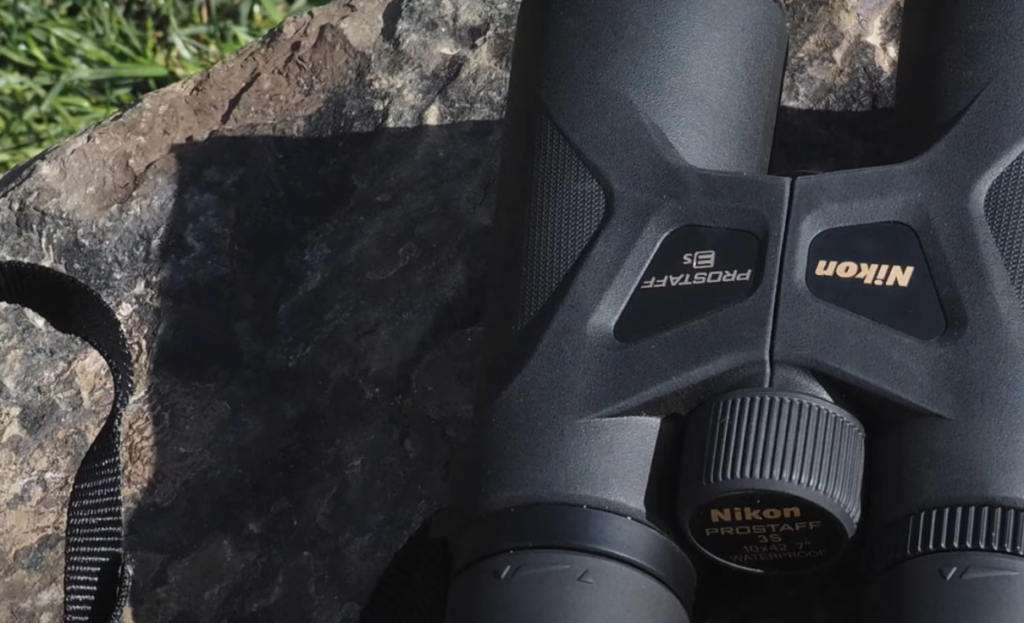
The main downside of these binoculars is that they can be a bit more difficult to focus than other types. This is because you have to adjust both lenses at the same time, which can be a bit tricky. However, once you get the hang of it, it should not be too much of an issue.
Individual Focusing Binoculars
Individual focusing is a feature that allows each eyepiece to be focused independently, which is important for two reasons. First, it ensures that both of your eyes will be able to see clearly through the binoculars at all times. Second, it makes it much easier to adjust the focus on the fly while you’re out in the field.
There are a few different types of focusing mechanisms, but we think that individual focusing is by far the best option for hunters. It’s fast, efficient, and easy to use, even if you’re wearing gloves. Plus, most models these days come with some sort of lockdown mechanism to keep the eyepieces from moving around while you’re using them.
Major Considerations When Purchasing Binoculars
When you’re out in the field, there are a few major considerations you should take into account when selecting your binoculars.
Magnification
Magnification is an important factor to consider. You need to be able to see your target clearly, and the level of magnification will determine how much detail you can make out.
Field of View
The field of view is the width of the area you can see through your binoculars. A wider field of view makes it easier to find your target, but a narrower field of view gives you a better look at what you’re seeing.
Lenses
The lenses on your binoculars are important for two reasons: light gathering and image quality. The larger the lenses, the more light they can gather. This is important for early morning or evening hunts.
The quality of the glass utilized in the lenses affects picture quality. Better glass will result in a clearer image.
Coated
Coated lenses help to reduce glare and improve light transmission. This results in a better image, especially in low-light conditions.
Fully Coated
Lenses that are fully coated have a coating on all air-to-glass surfaces. This is the best option for reducing glare and improving light transmission.
Multi-Coated
Lenses with a multi-coated surface have multiple coatings on at least one air-to-glass surface.. This is a good option for reducing glare and improving light transmission.
Fully Multi-Coated
All air-to-glass surfaces on fully multi-coated lenses have multiple coatings. This is the ideal solution for reducing glare and increasing light transmission.
Phase Coating
Phase coating is a special type of coating that is applied to one of the lenses. This helps to improve image quality by reducing chromatic aberration.
Chromatic aberration is an optical error that occurs when different colors of light are not brought into focus on the same plane. This results in a blurry or distorted image.
These are the most important factors to consider when purchasing binoculars for hunting. Be sure to keep these in mind when making your decision. With so many different options on the market, it can be tough to decide which ones are right for you. But if you keep these considerations in mind, you’ll be sure to find the perfect pair of binoculars for your next hunt.
Eye Relief
The distance between the eye and the binoculars’ eyepiece is known as eye relief. You need to be able to see through the entire lens without having to move your head too close to the binoculars. [4]
What the Numbers Mean
Binoculars are typically described with two numbers, like “12×50.” The first number is the magnification, while the second is the objective lens’s diameter in millimeters.
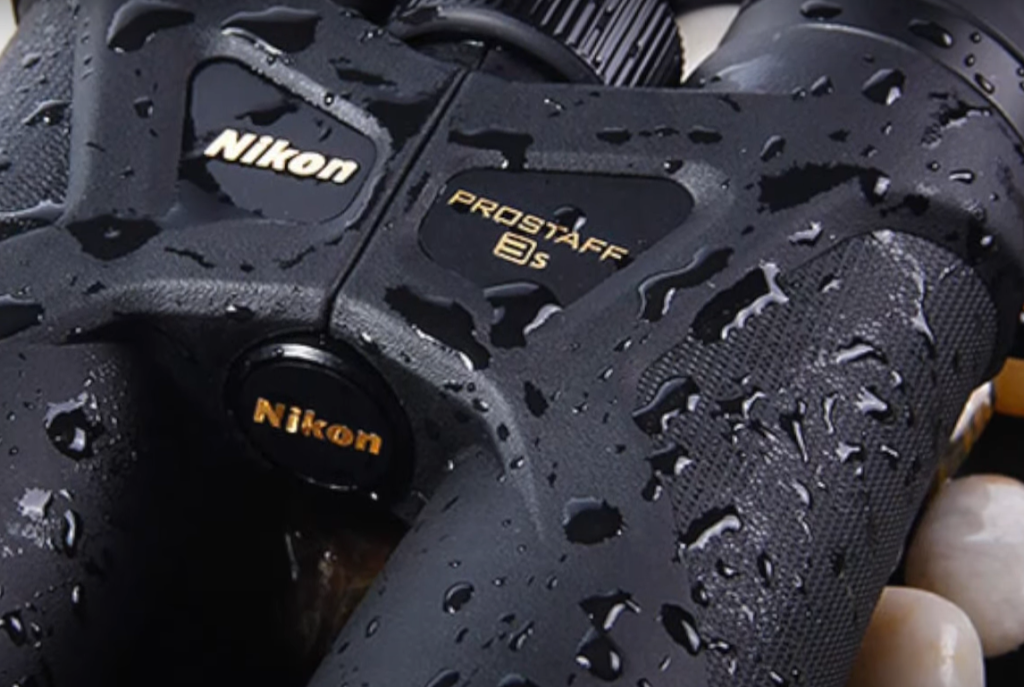
The binoculars’ magnification describes how much closer the object will seem than it would if seen without them. So, if you’re looking at an object that is 100 yards away, and you’re using 12x binoculars, it will appear as if it’s only 25 yards away.
The objective lens is the front lens of the binoculars. The larger the lens, the more light it can collect.
Twilight Factor
The twilight factor is a number that represents the binoculars’ ability to gather light. This is important for low-light conditions, like early morning or evening hunts.
The twilight factor is calculated by taking the square root of the objective lens size in millimeters and multiplying it by the magnification.
The twilight factor measures how much light the binoculars can gather and therefore how well they perform in low-light situations.
Major Features to Consider
When you are out in the field, there are a few things you need to take into account when choosing the right pair of binoculars. Here are some of the most important features:
Rangefinding
Many binoculars now come with a built-in rangefinder. This can be a great asset when you are trying to get an accurate shot. The rangefinder will help you determine the distance to your target so that you can make the necessary adjustments to your scope.
Camera (attachable or built in)
Some binoculars now come with a built-in camera. This can be a great way to take pictures or record video of your hunt.
Stabilization
If you’ll be using your binoculars for extended periods of time, you might want to consider a pair with stabilization. This feature will help reduce the amount of shaking and blurriness that can occur when you are holding the binoculars steady.
What to look for in
Hunting Binoculars
When looking for the finest binoculars for hunting, there are several criteria to consider. The most important things to look at are the power, the size, the weight, the field of view, and the price.
Power is measured in terms of magnification. Most hunting binoculars have a power of anywhere from seven to ten times. This means that they will make whatever you are looking at appear seven to ten times closer than it actually is.
The size of the objective lens is also important. This is the lens that is located on the front of the binoculars. Lenses with a larger diameter can gather more light than lenses with a smaller diameter.
Another thing to consider is the weight of the binoculars. If you are going to be carrying your binoculars around with you all day, then you want them to be as lightweight as possible.
The field of view is how much area you will be able to see through your binoculars at any given time. This is measured in terms of feet at a distance of one thousand yards. The larger the field of view, the better.
Finally, you need to consider the price of the binoculars. Hunting binoculars can range in price from a few hundred dollars to over a thousand dollars. You need to decide how much you are willing to spend on your binoculars before you start shopping.
Binoculars for Birdwatching
The best binoculars for birdwatching are not necessarily the same as the best binoculars for hunting. When you are looking for binoculars to use for birdwatching, you need to pay attention to a few different factors.
Power is still important when you are looking for binoculars for birdwatching. However, you do not need as much power as you would if you were using them for hunting. Most birdwatchers prefer binoculars with a power of anywhere from eight to twelve times.
The size of the lens is also important. Birdwatchers want large lenses so that they can see the birds clearly. The weight of the binoculars is also something to take into consideration. Birdwatchers often have to carry their binoculars around with them, so they want them to be as light as possible.
The field of view is also important for birdwatching. You want to be able to see a wide area so that you do not miss any birds. The price is also something to consider when you are looking for binoculars for birdwatching. You can find binoculars that range in price from a few hundred dollars to over a thousand dollars.
Marine and Aquatic Use Binoculars
If you’re someone who loves being out on the water, then you know how important it is to have a good pair of binoculars. Whether you’re sailing, fishing, or just enjoying a day at the beach, binoculars can help you spot things that you wouldn’t be able to see with the naked eye. But not all binoculars are created equal, and there are certain features that you’ll want to look for if you plan on using them for marine and aquatic purposes.
You need binoculars that are waterproof and fog-proof, for starters.
Look for binoculars that have rubber armor or a weather-resistant coating, as this will help protect them from the elements. And make sure that they have a wide field of view so you can scan the waters easily.Military Grade Binoculars
If you want the best of the best, then you need a pair of military grade binoculars. These are designed to be incredibly durable and offer superb optics. They’re usually on the pricier side, but they’re worth it if you want the very best hunting experience.
Here are our top picks for military grade binoculars:
- These binoculars are built for toughness and offer great value for money. They’re perfect for hunters who wants a reliable pair of binoculars that won’t break the bank.
- These binoculars are a step up in terms of quality and features. They’re perfect for hunters who want the very best performance and are willing to pay for it.
- If you want the very best military grade binoculars, then you need to get your hands on a pair of these. They offer superb optics and are built to last. However, they come at a premium price tag.
Binoculars for Concerts and Operas
While hunting binoculars are great for their durability and bright lenses, they’re not always the best choice for other activities. If you’re looking for a pair of binoculars to take to concerts or operas, then you need to get a pair that has different features.
Here are our top picks for binoculars for concerts and operas:
- These binoculars offer great value for money and are perfect for those on a budget. They’re not as durable as hunting binoculars, but they’ll do the job if you take good care of them.
- These binoculars offer superior optics and construction compared to the budget options. They’re perfect for those who want the very best concert-viewing experience.
- If you want the ultimate in concert-viewing binoculars, then you need to get your hands on a pair of these. They’re pricey, but they offer unrivaled performance.
What to Look for In Binoculars
When selecting the best binoculars for hunting, there are a few factors you should consider:
A Clear Picture
The first and most important thing to consider is the clarity of the image. Make sure to select a binocular with good light-gathering ability, as this will result in a brighter and clearer image.
A Reasonable Zoom
While you might be tempted to get a binocular with the highest zoom available, this is not always the best idea. A higher zoom will result in a smaller field of view, which can make it difficult to find your target. In addition, a high zoom can also cause image distortion.
A Comfortable Weight
You will be carrying your binoculars around with you for long periods of time, so it is important to select a pair that is not too heavy. Look for a binocular that is comfortable to hold and does not cause fatigue.
Intuitive Adjustability
The best binoculars for hunting are those that can be easily adjusted to your specific needs. Select a pair that can be quickly and easily focused, as this will make it easier to find and track your target.[5]
What size binocular lenses are best for hunting?
Large lenses will give you a brighter, clearer image, but they also add weight and bulkiness. Smaller lenses are more compact and lightweight, but won’t provide as clear of an image. Ultimately, it’s up to you to decide what size works best for your needs.

If you plan on doing any hunting in low-light conditions, such as early morning or evening hunts, then you’ll want to choose a pair of binoculars with large lenses. This will ensure that you have enough light-gathering power to see your target clearly. If weight is a concern for you, then smaller lenses might be the way to go.
Keep in mind that larger lenses will also give you a wider field of view, which can be useful when tracking moving targets. If you don’t think you’ll need a wide field of view, then smaller lenses will suffice.
It’s also worth mentioning that most binoculars these days are designed to be used with or without glasses. If you wear glasses, make sure to try out the binoculars before you buy them to ensure that they’re comfortable for you to use.
What do the numbers mean on binoculars?
The numbers on binoculars, also called the “binocular designation,” can be confusing at first. But they’re actually pretty simple to understand once you know what they mean.
The first number is the magnification, or how many times bigger an object will appear through the binoculars than it does to the naked eye. For example, if you’re looking at an animal that’s 100 yards away with binoculars that have a magnification of 12x, it will appear as if the animal is only 12.50 feet away.
The second number is the diameter of the objective lens, which is measured in millimeters. This is critical since a larger objective lens allows for more light to enter, allowing you to see better in low-light situations.
The last thing to consider is the field of view, which is how much area you can see through the binoculars at a given distance.
Keep in mind that the field of view will be narrower at higher magnifications, so if you’re looking for binoculars that will give you a wide field of view, you’ll want to choose a lower magnification.
Should you have different pairs of binoculars for different forms of hunting?
It’s a common question and one that doesn’t have a straightforward answer. In short, it depends on what you’re looking for. If you plan on doing a lot of long-distance hunting, then you might want to consider getting a pair of binoculars specifically for that purpose. However, if you hunt primarily in thick brush or woods, then a shorter pair of binoculars might be better suited for your needs.
There are also different types of binoculars designed for different purposes. For instance, some binoculars are designed to be more lightweight and compact, while others are designed for superior low-light performance. Ultimately, the best type of binoculars for hunting is the type that best suits your individual needs.
Additional features that are important for hunting binoculars
One thing to keep in mind while shopping for the best binoculars for hunting is that there are a few extra features that can be incredibly helpful but aren’t necessarily common. Here are a few of our favorites:
- A built-in rangefinder: This can be an invaluable tool when you’re trying to get a bead on your target. Having a rangefinder built into your binoculars means one less thing to carry, and one less potential point of failure.
- An integrated compass: Another great feature for hunters is an integrated compass. This can help you keep track of where you are, and make sure you don’t get lost in the wilderness.
- Night vision: If you’re planning on doing any hunting in low light conditions, or even at night, then you’ll want to make sure your binoculars have some form of night vision. This can be built-in, or it can be achieved with an add-on attachment.
FAQ
What to consider when buying hunting binoculars?
When you are looking for the best hunting binoculars, there are a few things you should take into account. The most important factors are:
- The amount of light that the binoculars can gather. This is measured by the objective lens diameter and is indicated in millimeters (mm). The bigger the lens, the more light that will be gathered and the brighter the image will be.
- The magnification power of the binoculars. This is indicated with an “x” and ranges from about x20 to x60. A higher magnification means that objects will appear closer, but it will also make them appear smaller in your field of view.
- The size and weight of the binoculars. Binoculars can range in size from small enough to fit in your pocket to large and bulky. Obviously, the larger binoculars will give you a better view, but they will also be more difficult to carry around.
- The type of prism used. There are two types of prisms: Porro and Roof. Porro prisms are the most common type and tend to be less expensive than Roof prisms. Roof prisms, on the other hand, are more compact and have less image distortion.
- The field of view. This is displayed in feet at 1000 yards, telling you how much area you may view through the binoculars. A wider field of view is better for hunting because it allows you to scan a larger area. [6]
What binocular magnification is best for hunting?
This is a difficult question to answer as it depends on the game you are hunting, the terrain, and your own preferences. In general, most hunters prefer binoculars in the range of eight to ten power for deer hunting and twelve to fourteen power for varmint or predator hunting. Higher magnifications can be used, but they are more difficult to hold steady and require a tripod or some other type of support.
If you are planning on doing a lot of glassing (looking at distant objects through your binoculars), then a higher magnification will be better. If you will mostly be using your binoculars for short-range spotting and tracking, then a lower magnification will suffice. Ultimately, it is best to try out different types and magnifications of binoculars to see what works best for you.
What makes good binoculars for hunting?
There are a few things you want to look for when choosing binoculars for hunting. First, you’ll want to make sure they’re durable enough to withstand being dropped or jostled around while you’re out in the field. Second, you’ll want to make sure they have a wide field of view so you can scan your surroundings easily. Finally, you’ll want to make sure they have a good zoom feature so you can get a closer look at your target.
Are 10×50 binoculars good for hunting?
This is a question we get asked a lot, and the answer is YES! In fact, they are ideal for hunting.
The main reason why hunters prefer using binoculars with a magnification of around ten times is that it provides them with enough power to see their target clearly, without making the image too shaky.
Another great thing about 50mm binoculars is that they gather more light than smaller models.[7]
So, if you’re looking for a good pair of binoculars for hunting, we would definitely recommend considering a pair of binoculars with a magnification of around ten times and an objective lens size of 50mm.
Are 8×30 binoculars good for hunting?
The answer to this question depends on a few factors. binoculars with an eight-power magnification are going to offer you a good, clear view of your target. However, if you’re hunting in low light conditions, you may want to consider a higher magnification. Additionally, the size of the objective lens (the second number in binocular specifications) will also affect how much light is gathered and how clear your image will be. So, while an eight-power 30mm pair of binoculars would be considered good for hunting, if you have the opportunity to upgrade to a larger objective lens, it’s worth considering. [8]
Another factor that comes into play when deciding whether or not a particular pair of binoculars is good for hunting is the field of view. A wider field of view is going to be more beneficial for hunting as it will allow you to scan a larger area for the game.
What can moisture do to my binoculars?
Moisture can cause all sorts of problems for your binoculars. If you live in a humid climate, it’s important to take measures to prevent moisture from getting inside the lenses or body of your binoculars. Here are a few things that can happen if moisture gets inside your binoculars:
- The lenses can fog up, making it difficult to see through them.
- Moisture can cause the lenses to become dirty or smeared, making it difficult to see clearly.
- If there is enough moisture inside the binoculars, it can cause the internal components to rust or corrode.
Moisture is one of the enemies of your binoculars, so be sure to take measures to keep them dry.
One way to prevent moisture from getting into your binoculars is to use a lens cloth or lens paper to wipe the lenses before you put them away. Another way is to store your binoculars in a dry place, such as a desiccant box. A desiccant box is a container that contains materials that absorb moisture. You can find desiccant boxes at most camera stores or online.
Useful Video: Best Binoculars for Hunting in 2020 – Top 10 Hunting Binocular Reviews
Conclusion
Now that we’ve gone over the five best binoculars for hunting, it’s time to choose the right one for you. Before making any decisions, it is important to do your research so that you can find the perfect fit for you. With this comprehensive guide, we hope that you feel confident and ready to choose the best binoculars for your next hunting adventure! Happy hunting!
References:
- https://www.petersenshunting.com/editorial/how-to-choose-the-best-binoculars-for-hunting/272235
- https://opticsmag.com/porro-prism-vs-roof-prism-binoculars/
- https://www.bestbinocularsreviews.com/blog/how-to-use-binoculars-12/
- https://taskandpurpose.com/gear/best-binoculars-for-hunting/
- https://gorp.com/best-hunting-binoculars-a-buying-guide/
- https://www.outdoorlife.com/10-things-to-know-before-you-buy-your-first-pair-binoculars/
- https://beardedbutchers.com/blogs/news/best-binoculars-for-hunting/
- https://www.24hourcampfire.com/ubbthreads/ubbthreads.php/topics/9037015/8x30_binos_for_western_hunting

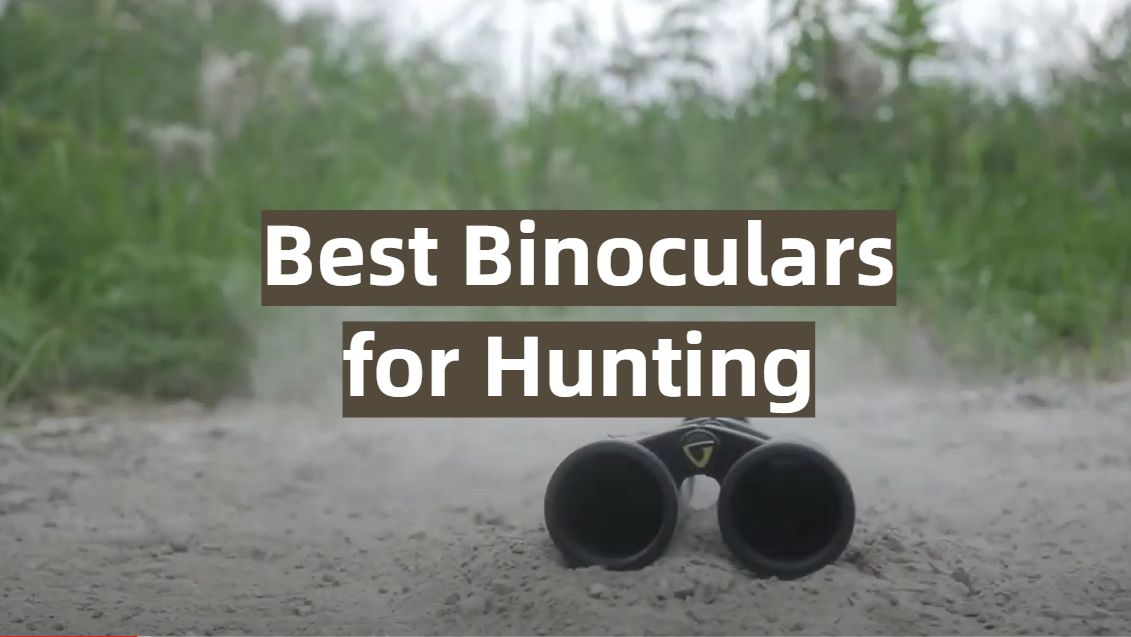




Leave a Reply